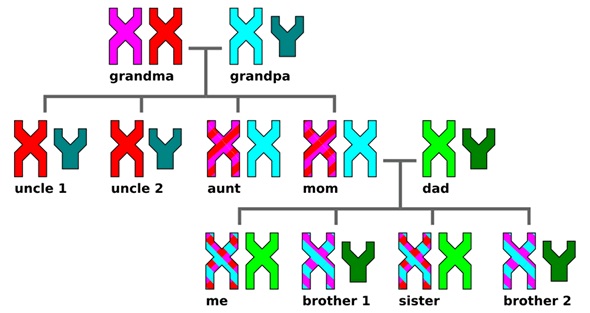There are 23 pairs of chromosomes in the human body. This includes 22 pairs of autosomal or somatic chromosomes that are common to both men and women and onechromosome that differs according to what gender a person is (sex chromosomes).
The sex chromosomes are the X chromosome and the Y chromosome. In a man, both an X and a Y chromosome are present, giving an XY configuration. In a woman, there are two X chromosomes, giving an XX configuration. The X chromosome is therefore one of the two sex chromosomes that determines an individual’s gender.
Functions of the X chromosome
The X chromosome contains over 153 million base pairs, the building blocks of DNA. In women, the X chromosome represents almost 5% of the total DNA and in men, who have only one X chromosome, it represents about 2.5% of the total DNA.
Men inherit the X chromosome they have from their mother and the Y chromosome from their father, while women inherit one X chromosome from the mother and the other from the father.
There are around 2000 genes located on the X chromosome and genetic research is focused on identifying these genes. This compares with 78 genes on the Y chromosome out of approximately 20,000 to 25,000 present in the human genome.
When X chromosomal genes are mutated, they may give rise to genetic conditions and these are termed X-linked disorders.
Genetic disorders that arise from missing, additional or malformed copies of the X chromosome are termed numerical disorders. Examples include Klinefelter’s syndrome where a male has one or more extra copies; Triple X syndrome, where a female has one extra copy and Turner syndrome where a female has one normal X chromosome and one missing or abnormal one.


No comments:
Post a Comment